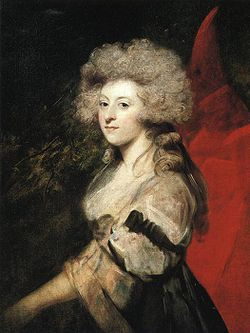Father Charles Kavanagh
Stephen Lewis described St. Thomas, Swansea in his 1833 book “_A Topographical Dictionary of Wales_”.
 |
| St. Thomas, Swansea Ordnance Survey Glamorgan XXIV Published 1884 |
“THOMAS-ST, a township, forming that part of the parish of SWANSEA which is in the hundred of LLANGYVELACH, in the union of SWANSEA, county of GLAMORGAN, SOUTH WALES, half a mile (E.) from Swansea; and containing 683 inhabitants. This place, which within the last few years has greatly increased in population and importance, is situated on the left bank, and near the mouth, of the river Tawy, across which there is a ferry to the town of Swansea, on the opposite bank, but which, during the whole of the interval from two hours before till two hours after the time of low water, is fordable. Considerable alterations have been made here, under the provisions of an act of parliament for improving the harbour of Swansea; of which the principal are, the construction of the eastern pier, extending six hundred yards across the mouth of the Tawy, and inclosing a capacious basin, which at high water has a noble appearance; and the formation of Port Tennant, the .private property of H. T. Tennant, Esq., by whom it was projected, and at whose sole expense it was completed. This latter consists of a dock capable of receiving, vessels of two hundred tons' burthen, communicating with the Swansea and Neath Junction canal, formed by the same gentleman, which extends hence to the village of Cadoxton, about a mile above Neath, where it joins the Neath canal, thus providing a Cheap means of conveyance between Port Tennant and a large district abounding with coal and culm, which are brought down the canal and here shipped. The hamlet includes a portion of the Cremlyn Burrows, an extensive marsh stretching along the coast, and bounded on the south by Swansea bay. It formerly contained a chapel of ease to the mother church of St. Mary, in Swansea, but, from the encroachment of the sea on this part of the coast, the site cannot now be distinguished. The seat Tan-y-Graig is pleasantly situated within its limits; and it is included within the electoral limits of the borough of Swansea, as defined by the act of 1832, to”
St. Thomas, Swansea
Ordnance Survey
Glamorgan XXIV
Published 1900
Danygraig Cemetery, situated on the lower slopes of Killay
Hill, opened on 1st January 1857. It was established as the first
municipal cemetery in Swansea to address the issue of overcrowded graveyards in
the town.
 |
| Father Charles Kavanagh Danygraig Cemetery credit - findagrave |
 |
| Father Charles Kavanagh |
Father Kavanagh was assigned to Swansea after completing his
studies for the Priesthood in Lisbon. During the 1840s, the Catholic population
in Swansea exceeded 300 individuals, the majority of whom were Irish immigrants
who had arrived prior to the Irish potato famines. This number increased
significantly from 1,369 in 1851 to 2,800 by 1859.
St. David’s Church in Rutland Place was opened by Father
Kavanagh. Four years later, a school was built.
 |
| Maria Fitzherbert |
The history of St. David’s dates back to 1810, preceding the
Catholic Emancipation of 1829. During this period, a Catholic chapel was
constructed, located in an adapted barn building on Nelson Street. The
construction was funded by Maria Fitzherbert, who had previously been illegally
married to George IV. The chapel's services were conducted by Albert Sejan, a
French priest who formerly served as chaplain to Louis XV.
 |
| St David's church |
Charles Kavanagh, who became the new priest in 1839, served the Catholic communities in Aberavon, Neath, and Llanelli during the Great Irish Famine. Recognizing that the existing chapel was inadequate for the growing congregation due to its size and dilapidated condition, he initiated a fundraising campaign for a new, larger church. The construction of the church was financed by Lady Catherine Eyre, Mrs. Shewin, and public donations. Designed by Charles Hansom, the church cost £1300 and opened on 8 September 1847. The stained-glass window depicting the resurrection was donated by George Grant Francis. Charles Hansom was the brother of Joseph Aloysius Hansom, who was creator of the Hansom cabs.
After Charles Kavanagh’s death, Peter Lewis served as the
new priest from 1856 to 1873. He oversaw the construction of the school, a
nearby convent, and the first post-Reformation Catholic church in Greenhill. He
also expanded St David's Priory Church and commissioned architect Benjamin
Bucknall to design the extensions. In 1873, the parish was transferred to the
Benedictines, who established it as a priory church.
 |
| Benjamin Bucknall |
 |
| Swansea Grammar School Mount Pleasant |
One notable past pupils of the Grammar School, was Dylan
Thomas,
The Irish community resided in the industrial regions to the
north of the town, an area that came to be known as Greenhill. Many inhabitants
were enduring substandard living conditions. During the cholera epidemic of
1849, Greenhill was severely affected. Father Kavanagh conducted over 170
funerals within a span of two months.
Father Kavanagh played a pivotal role in acquiring land for cemeteries situated at Oystermouth and Danygraig. Prior to his death in 1856, he initiated the lease of land at Greenhill. Several years later, St. Joseph’s Church was constructed on this site at a cost of £10,000. The church was designed by Peter Paul Pugin.
 |
| St. Joseph's Cathedral |
 |
| Peter Paul Pugin |
Father Kavanagh's funeral was marked by a formal civic
gathering, attended by the Mayor of Swansea and several members of the
Corporation.


Comments
Post a Comment